The travel industry was dealt an immeasurable blow in 2020; with planes grounded and travel posing a real threat to containing the coronavirus, nonessential travel, even for those who travel frequently or full-time, became dangerous, irresponsible, and, in some places, impossible. But now, with vaccines starting to roll out in several countries, we are collectively beginning to entertain a return to “normal,” including a return to travel, in 2021.

The 8 Most Meaningful Cities for Black Travelers to Visit in 2021
But for people in the Black diaspora, what was “normal” before the outbreak isn’t something we’re excited, or willing, to return to. The pandemic exacerbated the symptoms of the inequities we already face in our day-to-day lives, and many full-scale revolutions erupted around the world.
And I know, y’all. We all love Tulum, which became a Black travel hotspot in 2020 due to Mexico’s rather lax restrictions surrounding travel to the nation during the pandemic. But coming into 2021, I urge you to reevaluate exactly why we travel and choose your destinations accordingly.
If 2020 forced us to align our choices more closely with our moral compasses, to support movements and companies and services that will fight with us for our liberation, then 2021 will be the year we will gain the opportunity to behave accordingly with our travels.
There are tangible, actionable ways to do this.
We can divest from travel companies that have remained silent on the Black revolution and recognize that this signals their complicity in white supremacy. We can educate ourselves on the history and legacy of colonialism and how it affects Black lives, and reject how white hegemony uses travel as a form of neo-colonialism to this day. And maybe most importantly to this list, we can spend our travel dollars supporting Black communities, and the communities of our allies, worldwide.
While before we traveled for the what — the perfect beach, the perfect tour, the perfect food – it’s time we start considering the why, and centering our travels around connecting with people from what we are told are disparate communities. It’s time to ally ourselves with the folks who stand with us in solidarity and to find common ground from which we can continue to build. Because after a year so many of us were forced to spend in isolation, 2021 should be the year we come together.
1. Reykjavik, Iceland
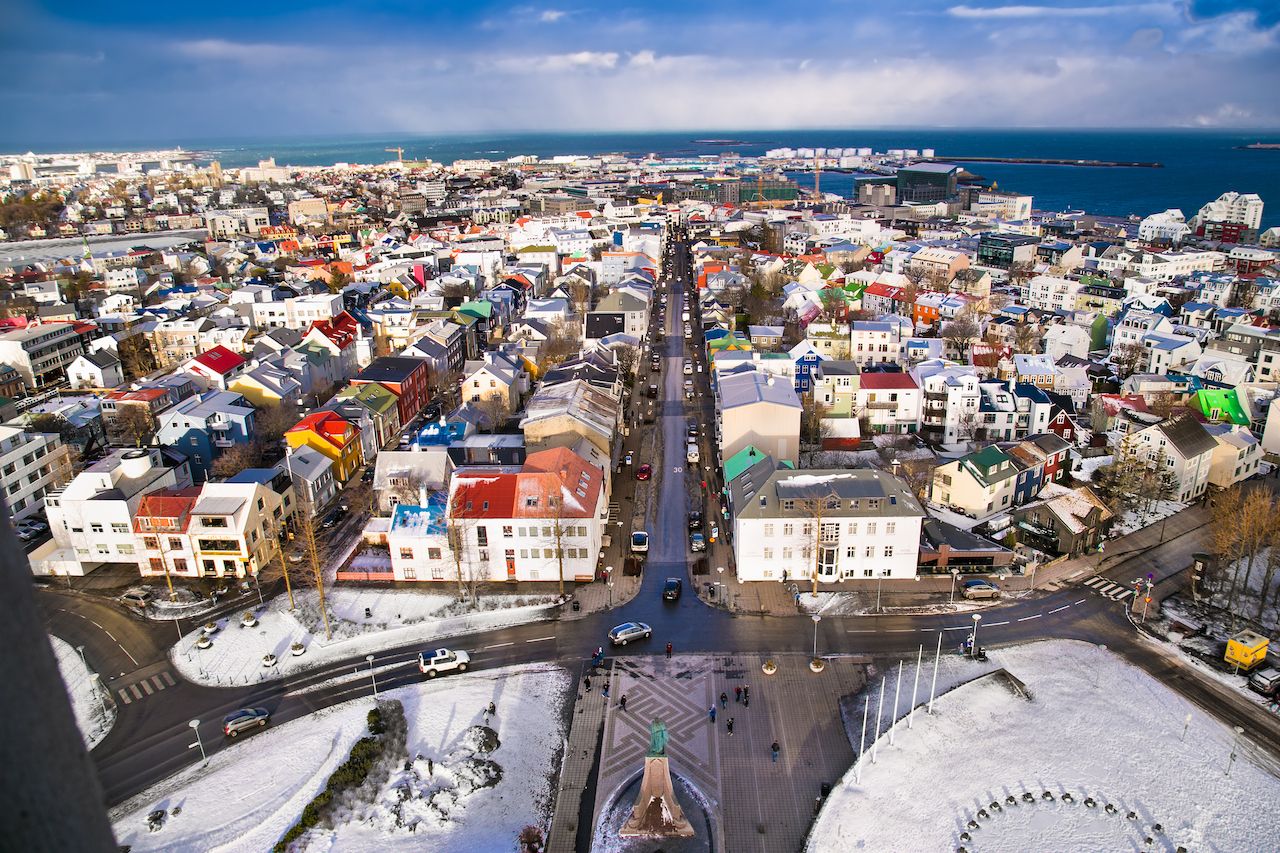
Photo: Aleksandar Todorovic/Shutterstock
A relatively tiny island nation crossing the Arctic Circle in the North Atlantic, Iceland needs no introduction when it comes to its spectacular fjords, epic volcanoes and glaciers, and inviting thermal hot springs. But despite its massive worldwide popularity for travelers, Iceland has a reputation for being extremely homogeneous, which can leave Black travelers and transplants to the nation wary, worried about how they might be received. Enter Jewells Chambers, an Iceland resident by way of the United States and founder of All Things Iceland, a collection of interconnected media platforms she created to educate visitors, particularly those of color. Between her Instagram page, podcast, and her following on YouTube, she inspires Black people around the diaspora to give Iceland a try.
Chambers recently conducted a nearly hour-long interview with Miss Universe Iceland 2019, Birta Abiba Þórhallsdóttir, who is of Icelandic and Congolese descent. She went into intense detail on her experiences being raised in Iceland, describing the racism she has faced and her journey to embrace self-love as a form of healing. In the Interview, Birta details her year traveling around the world acting as the face — the Black face — of a country often thought of as exclusively white. Both Birta and Chambers are here to change that perception by showing their followings that not only do people of color move to Iceland, but they’re also born there.
While Chambers maintains infectious energy and undeniable optimism, she’s not naive to the fact that racism exists in Iceland. Her straightforward and to the point exposition on the state of racism there removes the fear it may normally inspire. “People of color, of different shades, have been discriminated against [here,]” Chambers expounds in a 2018 video. “We need, in general, to band together.” The community Chambers has built online now exists as a rallying cry for Black travelers, a beacon that reminds folks to reclaim their space. I encourage you to join her.
If you check out her video “7 Stunning Places in Iceland I Visited in 2020,” you’ll get a glimpse into what Chambers considers her favorite places in the small nation, and renting a car in Reykjavik will give you the freedom to follow in her footsteps. You could check out the alluring GeoSea Baths which Chambers recommends as an alternative to the super touristy Blue Lagoon, or you could “journey to the center of the earth” by literally climbing inside a dormant volcano.
2. Marrakech, Morocco
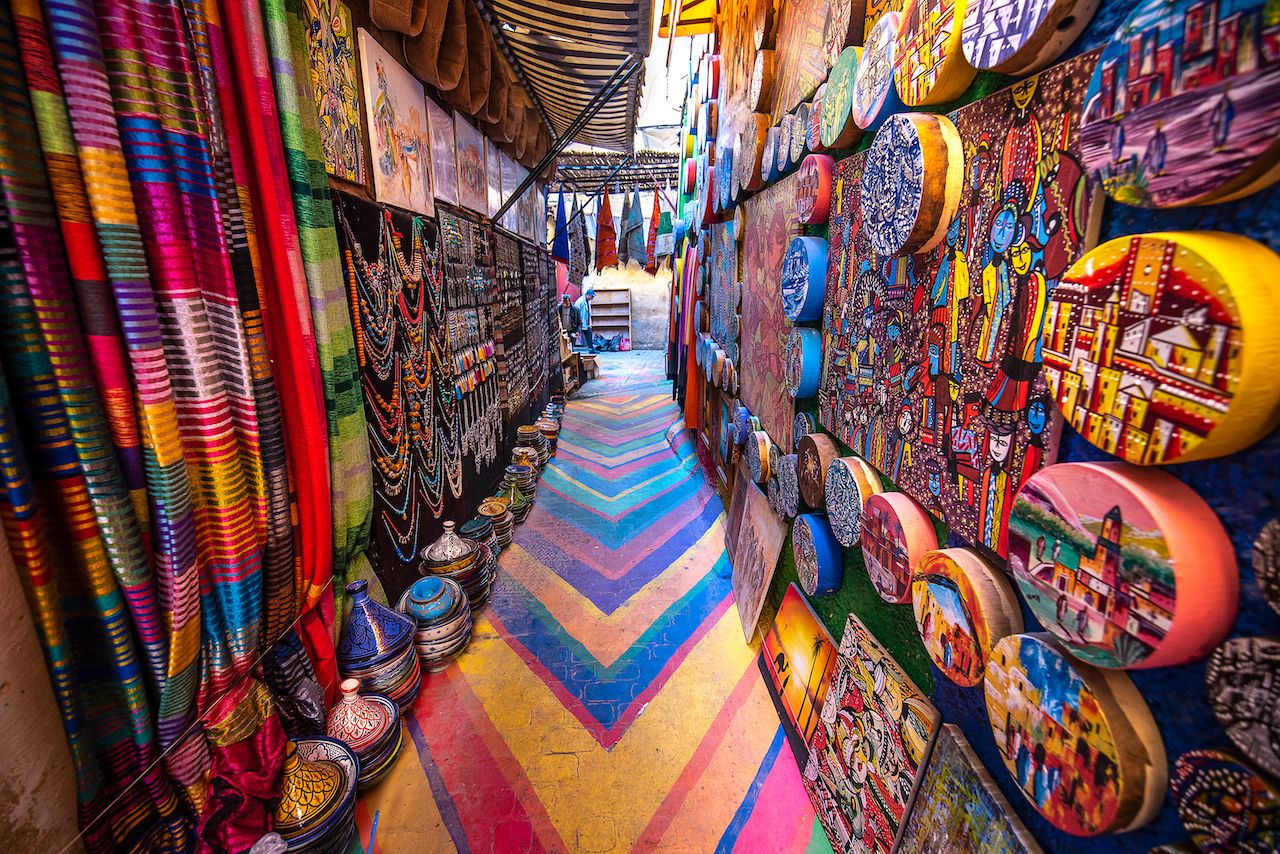
Photo: Balate Dorin/Shutterstock
Creatives have long flocked to Morocco; we’ve seen many famous examples, particularly writers, who have found inspiration in the ancient city, including William S. Burroughs, George Orwell, and Jack Kerouac. But a new school of creatives is flocking to the North African nation, and they are decidedly more melanated.
Multicultural and multiethnic by design, Marrakech has a knack for making folks who hail from many parts of the world feel right at home. It has been a hub for trade and the host of international craftspeople and artisans for hundreds of years, and it owes this to the clear influences of Sub-Saharan Africa, Europe, and Asia. This combination of cultures and long-held entrepreneurial spirit are just a couple of reasons that Black expats are choosing the storied city over, say, Paris, which has historically attracted the Black creative elite.
One of the champions of this movement is a designer, entrepreneur, and titan of Moroccan hospitality as the owner of the legendary villa Jnane Tamsna, Meryanne Loum-Martín, who is a longtime resident of Marrakesh by way of the French capital. In addition to her new lifestyle brand and photography book, 2020 was also the year she launched AFREE Culture, a salon event for culturists, creatives, and entrepreneurs that will be returning late next summer.
Loum-Martín hopes it will become just one of many touchstones to aid in celebrating “African Creativity and International Black Excellence through curated events focused on film and literature,” though unlike her other entrepreneurial endeavors, she sees it less like something to capitalize on and more like a true convening of creative thought. When asked what her best investment has been over the years, she answered, “Letting myself go with my instinct about Marrakech 30 years ago and discovering that it was the right place for me.” Maybe Marrakech can be right for you, too.
3. Ho Chi Minh City, Vietnam
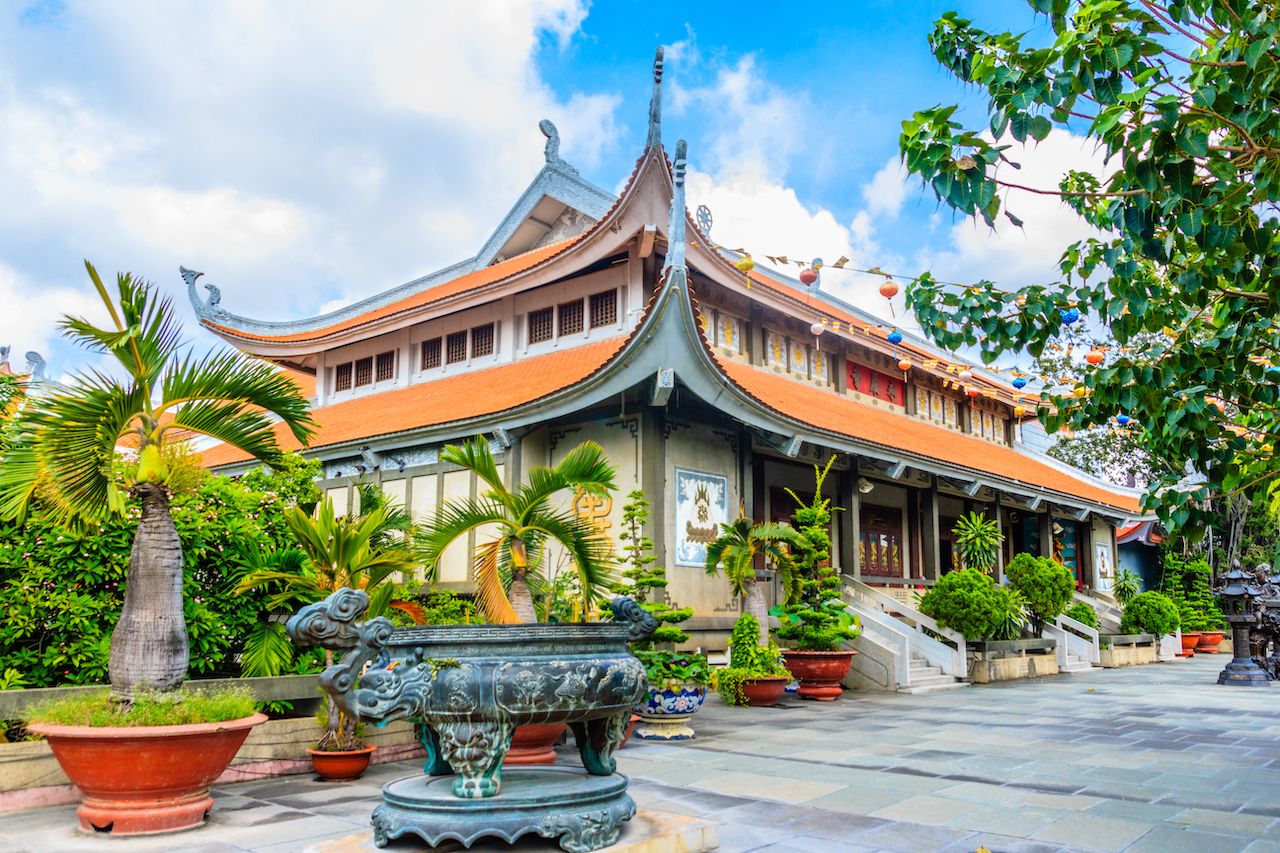
Photo: John Nguyen263/Shutterstock
A particularly arresting scene in Spike Lee’s incredible 2020 film Da Five Bloods is a monologue delivered brilliantly by Ngo Thanh Van as the very real Hanoi Hannah. “Black GIs,” she recites into the microphone, “nothing is more confused than to be ordered into a war to die without the faintest idea what’s going on.” Long understood to be a mere pundit of North Vietnamese propaganda, our contemporary understanding of the United States’ role in Vietnam makes Hanoi Hannah seem less a tactic of manipulation on the part of the opposition and more of a figure of solidarity with the very real American soldiers sent overseas, particularly for Black GIs who were possibly the most disenfranchised among them.
For many, Da Five Bloods was the first piece of media to recontextualize American involvement in the war in Vietnam, some shifting their preexisting concepts of victim and villain and inciting a newfound interest throughout the Black diaspora of visiting the country. Huge portions of the film were set and shot in Saigon, now Ho Chi Minh City, so it’s a perfect place to begin your journey. While a visit to Ho Chi Minh City includes re-educating yourself on the history of the Vietnam War, consider it a lesson that can help teach you to remain more critical of world powers going forward. Let this be the lesson that instills within you the fact that no regime is above examination.
Let your re-education begin at the Củ Chi tunnels. There you can see first hand the conditions from which the Viet Cong launched the Tết Offensive. They are preserved by the Vietnamese government as a memorial to the war, and in some of the safer sections of the underground complex, tourists are invited to go within them, underground. But no site is likely more jarring than the War Remnants Museum, originally opened in 1975 to highlight American war crimes in Vietnam. The exhibits contain a mix of military artifacts, curiosities, and photographic installations including a massive and arresting display in remembrance of the My Lai Massacre, wherein American soldiers decimated as many as 500 unarmed civilians in Sơn Tịnh District in March of 1968. If you’d like to book a tour, you can arrange one through the museum that also includes visits to The Reunification Palace, Giac Lam Pagoda, and the famed Ben Thanh Market.
4. Havana, Cuba
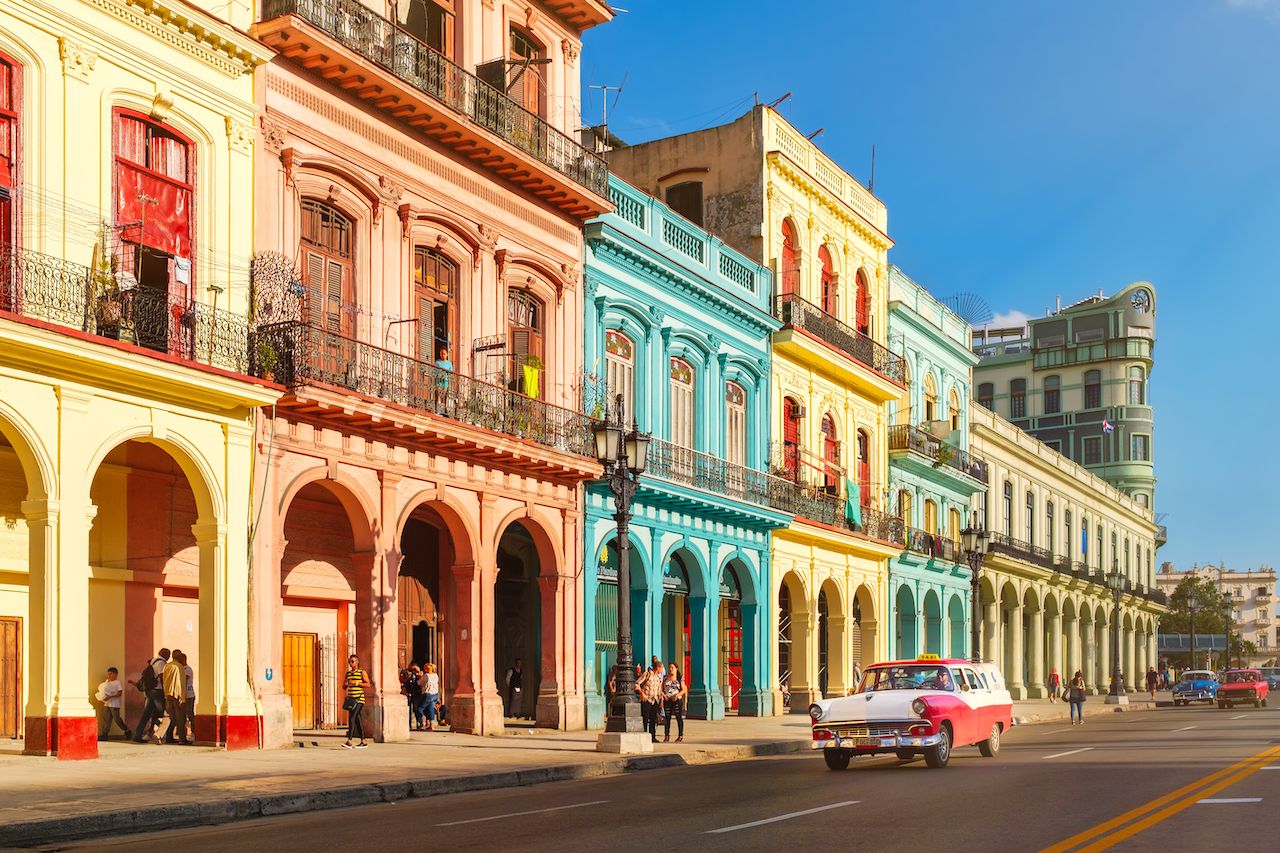
Photo: Kamira/Shutterstock
On November 9, 2020, Afro-Cuban rapper and pro-democracy activist Denis Solís González filmed a police officer who had entered his house without a warrant and posted it to his social media. For this, he was arrested on the charge of contempt and sentenced, without council, to eight months in prison. Following his detention, Havana erupted into days of civil unrest with Cuban creatives of all stripes spearheading the actions. Like other civil rights movements of 2020, these actions mark a new refusal to accept the treatment of Cubans — and particularly Afro Cubans — who suffer at the hands of police.
Connecting with Afro-Cuban communities should be a top priority this year, particularly when our allegiances ally so closely. 2021 might be a particularly auspicious year to do so as United States President-elect Joe Biden has already said, back in September, that he plans to overturn much of Trump’s policies in Cuba. This will return policies to how they were under the Obama administration to open up communication, trade, and travel to and from the island nation.
Havana is of course the must-see destination here; you could fill your days simply strolling the colorful streets, browsing the art markets, sipping rum, and listening to some of the best live music in the world. But do try to make time to visit the lesser-known parts of the island, such as vibrant Cienfuegos or lush Viñales. You’ll be able to escape the crowds and support areas of the island with less consistent tourism.
5. Victoria Falls, Zimbabwe

Photo: Lukas Bischoff Photograph/Shutterstock
Throughout the last decade, Zimbabwe suffered political turmoil, a crippled economy due to hyperinflation, and US sanctions that made it difficult for travelers to visit and for Zimbabwe to maintain its reserves of cash. But in 2018 things were starting to look brighter for the Southern African country. The removal of dictatorial president Robert Mugabe in 2017 led to new President Emmerson Mnangagwa declaring, “Zimbabwe is open for business,” a comprehensive initiative to restore Zimbabwe to a middle-income economy, including revamping Zimbabwe’s struggling tourism sector. New hotels and tourism ventures launched, and Matador Network even declared it one of the top 25 destinations to visit for all of 2019.
But that glimmer of hope that Zimbabwe would become a major tourist destination was short-lived. The pandemic has rendered the trickle of USD dwindle to nearly nothing, bringing the fledgling Zimbabwe tourism industry to its knees. It’s vital that travelers return to Victoria Falls in 2021 if we want to see this country and its people thrive in the future.
When you choose Vic Falls for a vacation, not only are you bringing much-needed money to the economy, but you also have the opportunity to bring cash — I’m talking actual, physical United States dollars — that they so desperately need to maintain supply in the banks. And lucky for you, the awe-inspiring Mosi-oa-Tunya, the Sotho name for the largest waterfall in the world, will be right on your doorstep. The best way to see the area is with an experienced tour guide, and none are more knowledgeable than Beks Ndlovu, CEO of African Bush Camps. Ndlovu operates 15 safari camps in Zimbabwe, Botswana, and Zambia, and offers Mosi-oa-Tunya excursions. You can choose from a helicopter tour, a sunset cruise on the Zambezi, and even a boat trip to Livingstone Island to gain a unique perspective on the falls.
6. Ramallah, Palestine
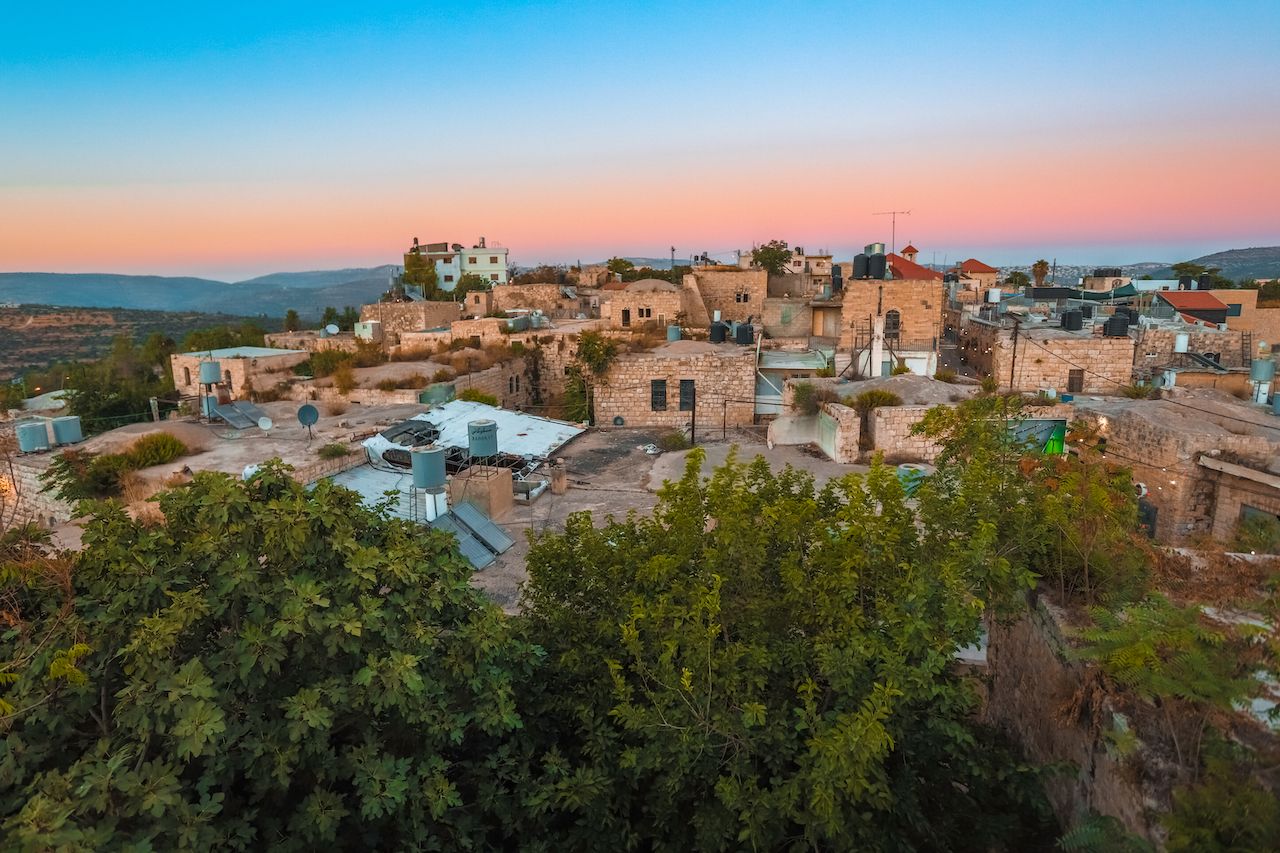
Photo: nayef hammouri/Shutterstock
Since its inception in 2013, Black Lives Matter has been nearly synonymous with the Free Palestine and larger BDS (Boycott, Divestment, Sanctions) movement. “There is a fundamental relationship between Black people in the US and the Palestinian struggle, and that’s connected through legacies of imperialism and colonialism by the United States,” explains writer and activist Kristian Davis Bailey, who was famously detained by police in Israel in late 2015 on his way to a conference in Palestine, a direct result of racial profiling.
What many have just learned this year during what Palestinians have called the American Intifada, is that many American police recruits are sent to Israel to be trained by the same forces that hold the people of Palestine in what has been called “the largest open-air prison in the world” behind an illegal blockade: the Israeli Defense Forces. This means that the goals of the Palestinian people and Black Lives Matter are inherently intertwined, and when considering allyship worldwide, we maybe have none more established and vocal than Palestine. They have long been sympathetic to the struggles of the Black diaspora, and in 2021 I challenge all of us to be better allies to them.
While the first stop on many travelers’ itineraries might just be the Dar Zahran Heritage Building, an art gallery that displays a photo-historical record of Ramallah spanning over 100 years, you won’t want to miss the lovely and humble bar, La Grotta. A hangout in Ramallah’s Old Town owned by a local Palestinian musician, La Grotta can be tricky to find. But once you climb the steps inside, you’ll be rewarded with a night out among Ramallah’s creative and revolutionary community, maybe the perfect place to begin your education in transnational solidarity.
7. Vancouver, Canada

Photo: canadastock/Shutterstock
The first thing you should know about visiting Vancouver is that when you arrive, you will be inhabiting the traditional lands of the Musqueam, Squamish, and Tsleil-Waututh First Nations. These lands together are just one part of the greater, unceded Coast Salish territory, which historically extends, long before the colonial border was instilled between the United States and Canada, into what is now Western Washington.
While it is now standard for individuals and institutions to acknowledge the Indigenous land they occupy, the generations-old LANDBACK movement is seeking to actively — and please understand that this also means literally — return unceded lands back to their original stewards.
“To truly dismantle white supremacy and systems of oppression, we have to go back to the roots,” they explain. “Which, for us, is putting Indigenous Lands back in Indigenous hands.” Their central messaging acknowledges both the transatlantic slave trade and the subjugation of Black populations worldwide. They are actively fighting for “a future where Black reparations and Indigenous LANDBACK co-exist. Where BIPOC collective liberation is at the core.”
As Indigenous Tourism BC outlines, “Indigenous travel experiences have the power to move you. To help you feel connected to something bigger than yourself.” They preach the value of connecting with communities rather than chasing destinations, outline how and where to spend your tourist dollars, and remind you to be respectful of Indigenous lands and practices. The tenants that ITBC sets forth for ethically visiting the region are all broken down into actionable steps on their website, replete with recommendations, itineraries, trips, and tours.
While in town you can stay at Skwachàys Lodge, Canada’s first Indigenous Arts Hotel, which is operated by the non-profit Vancouver Native Housing Society. By staying here you’ll be supporting their artist in residence program, which offers deeply subsidized living and workspace for indigenous artists. From there, you can visit museums, heritage sites, and cultural centers where you can learn more about the Indigenous history of the region. Before you leave, be sure to pay a visit to Vancouver’s only Indigenous owned and operated restaurant, Salmon and Bannock, where you’ll find precisely prepared fare crafted from generations-old recipes.
The decolonial practices you could learn from traveling according to the guidelines of the ITBC in and near Vancouver are practices that don’t have to end there but rather inform your choices, behavior, and politics for the rest of your life.
8. Limón, Costa Rica
One breakout public figure highlighting Afro-Costa Rican culture is Kim Haas, host of the new PBS show Afro Latino Travels with Kim Haas. With her self-produced show, Haas intends to highlight the contributions of Afro-Latinx people and secure a space for African-descended people within the greater conversation of Latin America. When asked why she created the travel show, she explained to BronxNet, “I watch Spanish language television, I worked for one of the Spanish language television networks, and I never saw anyone who looked like me.”
Limón is featured in the second episode of the series, during which Haas introduces you to Sergio Bolanos Soto, who explains the history of Black railroad workers in Costa Rica and the legacy of Black immigration to Limón from Jamaica and other Caribbean nations. We also meet restaurateur Selvin Brown, whose eponymous restaurant in nearby Punta Uva serves the Jamaican-inspired seafood stew róndon that we see lovingly recreated by Brown and Haas in the program.
Limón is the stronghold of all things Afro-Costa Rican, with almost half of all African-descended people living in Costa Rica residing within its borders. They have experienced a renaissance of exploring and embracing this culture in recent years, largely spurred by the 2018 resolution designating the month of August for the History of African-descended Peoples in Costa Rica, which inspired the creation of multiple new events, panels, and exhibitions of art, food, and letters organized by the Civic and Cultural Committee of the Black Peoples of Limón. If you do plan your visit for August, you’ll want to stay until the end of the month when festivities culminate in Black Peoples and Afro-Costa Rican Culture Day, which among other events features the Grand Parade de Gala, beginning in the early afternoon from Parque Asís Esna.